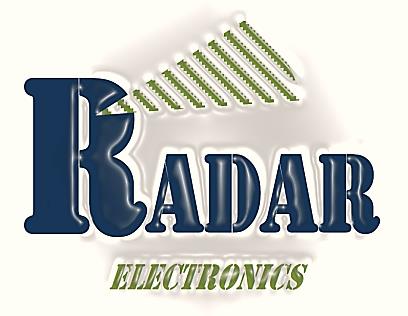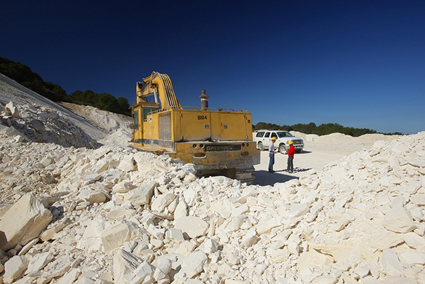Global Mining Company Cuts Costly Vehicle Collisions In Half in Two Years
The good news at Imerys S.A.’s open pit mine in Lompoc, California, is that not many employees get around on foot in the mine area: Fewer people on the ground interacting with mobile equipment traffic means less chance of vehicle-related injuries. However, the site has been in operation for over 100 years and, with a 5,000-acre footprint, property damage accidents were occurring at an unacceptable rate. After consulting with other mine safety professionals, the site’s safety manager began installing PRECO Electronics’ PreView Radar systems on the site’s heavy equipment. Two years later, collisions at Lompoc had decreased by more than 50 percent. Bruce Coggin, Senior Environmental Health and Safety Manager at Imerys’s Lompoc site, considers himself very fortunate that the thing he worries most about is property damage from mobile equipment. To be sure, damage to equipment, whether stationary or mobile, is a problem for any company. But, it pales in comparison to the prospect of accidents involving people.
The Price of a Collision: Much More Than Just Repairs
Large haul trucks in tight spaces increases the chance of property damage events. “These haul trucks can hit things and not even know it,” Coggin says. “They’re big, they’re rigid, and they’re usually carrying so much weight that the operators can’t always tell if they’ve struck another vehicle, an out-building, or another piece of mining equipment.” The financial loss continues well after the actual crash, Coggin says. “The cost of a collision is not just the damage to the equipment. “We have an accident investigation to complete and then a post-accident drug test. The time to perform a drug test can cost in excess of $1,000.00 due to transport of the individual to the off-site facility. ”
How to Cut Your Accident Rate in Half
After talking about these recurring collisions with other members of the Industrial Minerals Association-North America (IMA-NA), Coggins decided to follow their advice and talk to PRECO about its object detection radar sensors. “Our operators have to navigate very large vehicles through very small spaces,” Coggins says. “It just makes sense to warn them when they’re getting too close to something. The technology is here and it’s excellent, so why not make it available to them?”
He began by installing the sensors on his heavier equipment; bulldozers, haul trucks, vactor trucks, guzzlers, and graders. His first order of business was to get the systems on equipment operating in confined areas. You might think tight spaces wouldn’t be a problem for a site that covers more than 5,000 acres, but only about 300 acres constitute the actual production area itself. Most of the accidents take place in a crowded group of buildings in the center of the open pit. It’s been about two years since Coggins began installing the PreView Radar. Since then, he’s seen the number of collisions decrease by more than half.
A Pilot Project That’s Set to Take Off
Now that he has outfitted most of the site’s heavy equipment with the sensors, Coggins plans to move on to lighter equipment. First on the list is the water buffalo, which also works in tight spaces keeping the roads wet and the dust down. He’s also expanding the use of PRECO’s PreView Safety Alert System –back-up alarms- on his fleet of 15-plus forklifts. He considered using the radar systems in this scenario too but he realized that in the extremely confined areas where the forklifts operate, the sensor’s alerts would go off non-stop. Installation of PRECO’s PreView Radar systems has enabled Coggin to achieve two goals at the same time. On one hand, he can continue to decrease the odds that an employee will ever be struck by moving equipment. At the same time, he can reduce the significant costs incurred by property damage-type accidents. Small wonder, then, that he plans to continue expanding use of these heavy-duty safety systems. “So far, everything we’ve done with the PRECO sensors and alarms has been as part of a pilot project,” Coggins says. “It has worked out very well, so I’m looking to implement PRECO systems at our other mining operations.” To date, Imerys has 270 industrial sites in more than 50 countries.
The Proof of the Pudding: Customer Service
In rugged environments like the ones Imerys equipment usually operates in, the rubber hits the road when it comes to customer service, and Coggins has found PRECO to be a good partner in this respect as well. “It’s very helpful to have a single point of contact—someone reliable I can reach out to. I’ve gotten to know my contact person at PRECO well, and he knows me. He understands what I deal with from day-to-day, and isn’t shy about reaching out. In fact, I bet he’s called me more times than I’ve called him. Just another reason why I’m happy I chose PRECO.”


















